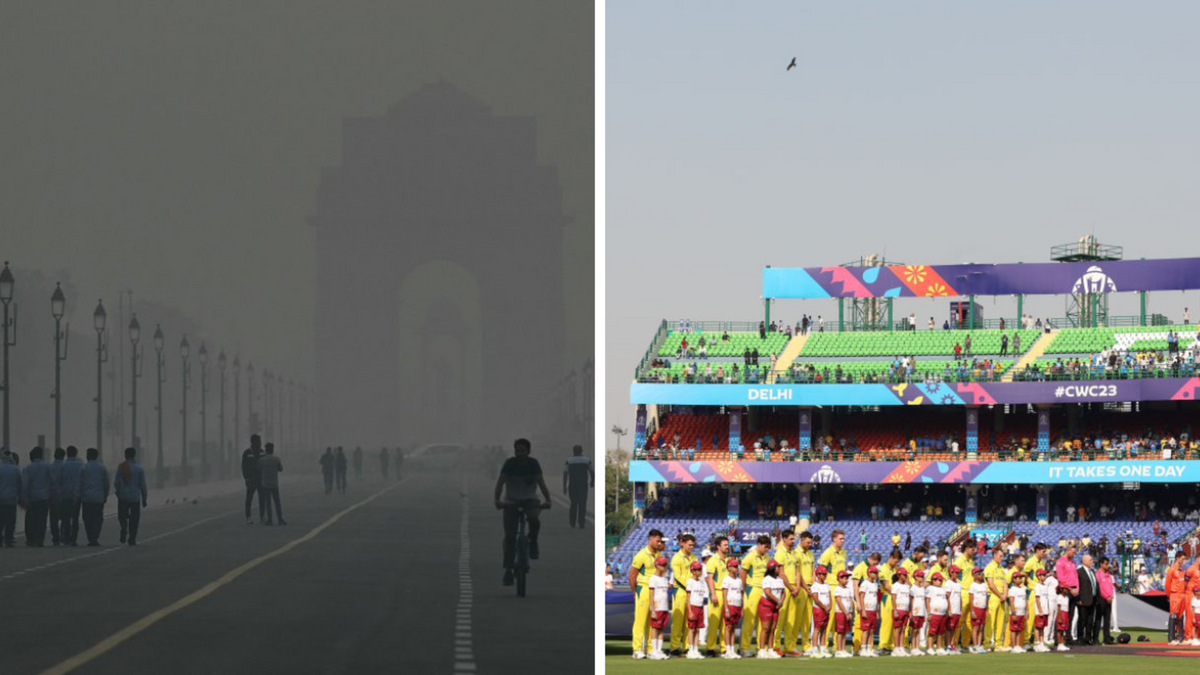
Delhi has been under the grip of severe levels of air pollution. With one more World Cup game to go in the city, here is an explainer on what’s going on in India’s capital as far as the weather is concerned and what it means for the World Cup.
To bet on the World Cup with our Match Centre Partners bet365 head here.
The air quality in certain parts of India’s national capital has officially reached hazardous levels as the city has been struggling with extreme smog lately. This has led the government to take several temporary measures to deal with the rising air pollution in the city.
Sri Lanka and Bangladesh are scheduled to play the 38th match of the ongoing World Cup at the Arun Jaitley Stadium in Delhi. While there has been no word by authorities on the game, here is all you need to know about the current situation in Delhi.
How bad is the air quality in Delhi?
The AQI (Air Quality Index) is a scale that denotes the level of air pollution at a particular place. The higher the value, the more polluted the air is with greater health risks to everyone staying in the area. The highest value on the pollution metric is 500.
On Friday, the 24-hour average AQI shot to 468, jumping to the “severe plus” category. The city woke up to dense layers of smog which has reduced visibility as well. Some other nearby regions even crossed 700, suggesting the levels had maxed out.
To put it into perspective, the air quality is considered acceptable if the AQI is below 100. As the number increases beyond that, so does the health hazard.
What steps are the authorities taking?
The Delhi government has ordered all government and private schools to remain closed on November 2, 3, and 4. The Commission for Air Quality Management has invoked Stage-III of the Graded Response Action Plan which puts a ban on construction and demolition activities around the national capital except for certain specific projects.
The Delhi Metro Rail Corporation has also sanctioned 20 additional train trips. A host of other steps are also being taken to minimise the impact of the pollution.
How does it affect the World Cup?
There has been no word yet from either the BCCI or the ICC about any potential rescheduling of the Sri Lanka vs Bangladesh match that is supposed to be played at the Arun Jaitley Stadium in Delhi on November 6.
However, Bangladesh have already cancelled a training session in Delhi today (November 3) owing to the pollution levels as they didn’t want to put the players through the ordeal of sweating it out in such conditions ahead of the game.
“We have two more training days. Some of us developed coughing, so there’s a risk factor. We don’t want to get sick. We don’t know if things will improve, but we have training tomorrow. We want all the players to be fit for the important game coming up on November 6,” said Bangladesh team director Khaled Mahmud in an interaction with ESPNCricinfo.
Under the current levels of pollution, even healthy people are under a serious risk of developing health issues, let alone those with pre-existing conditions. In such an environment, playing a cut-throat game of cricket at the highest level might turn out to be difficult for everyone involved.
This is not the first time that international cricket has been affected by air pollution in Delhi. In 2017, a Test match between India and Sri Lanka had to be repeatedly stopped due to extreme levels of air pollution as players found it hard to breathe, some even wearing masks.
It remains to be seen whether any steps are taken to prevent such a scenario from occurring again on November 6.








